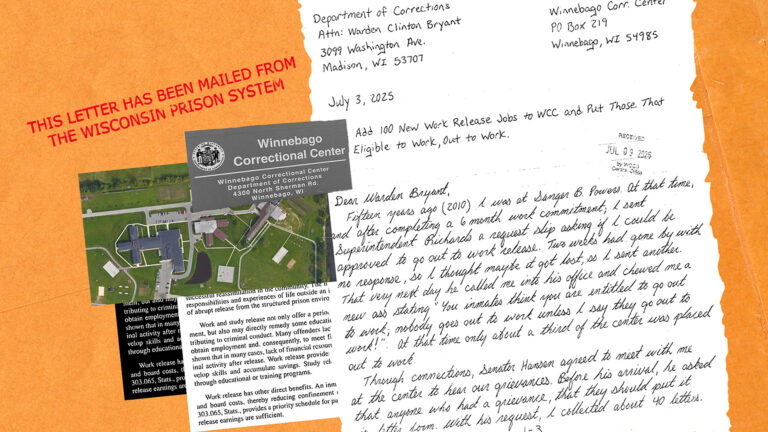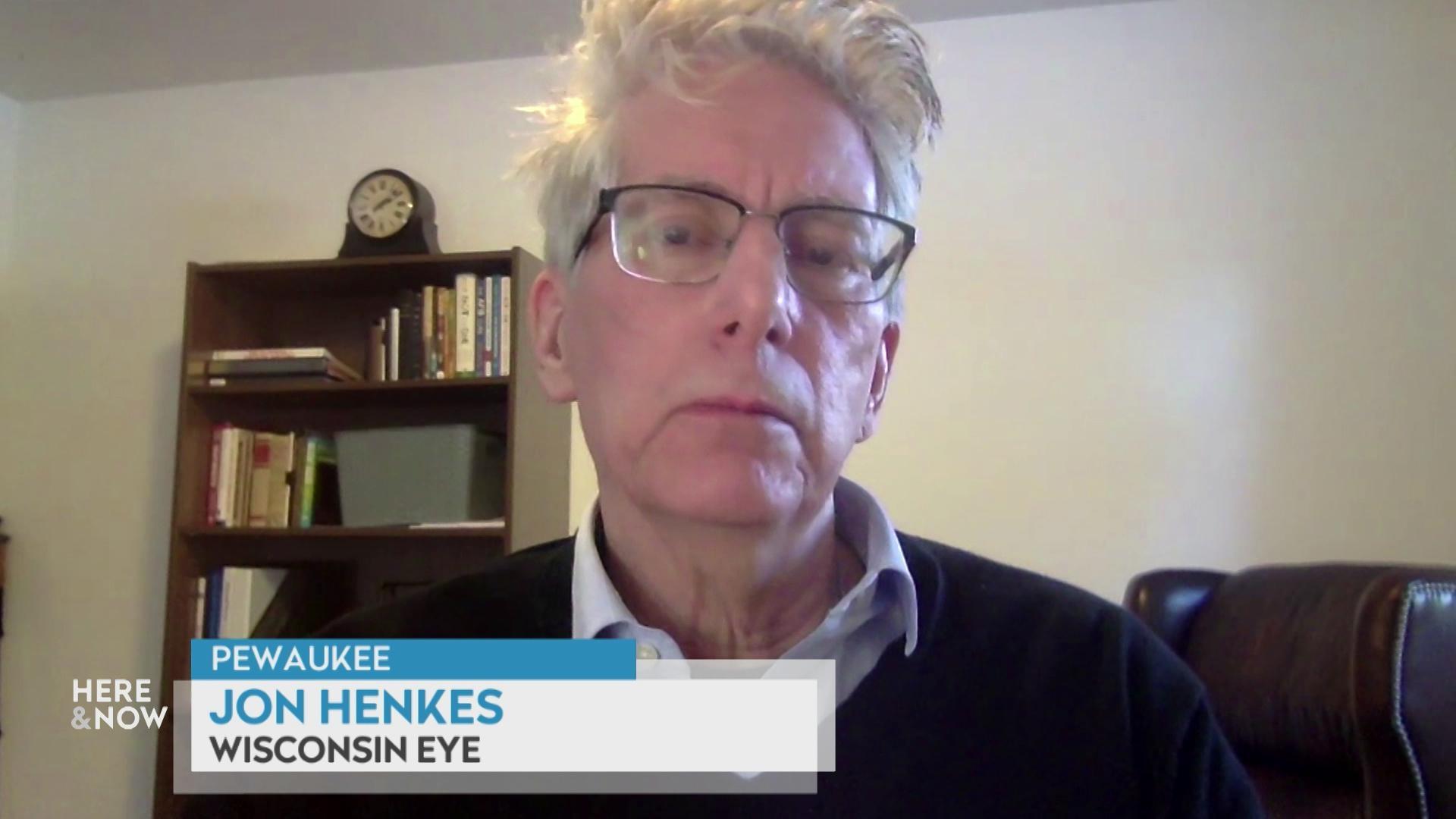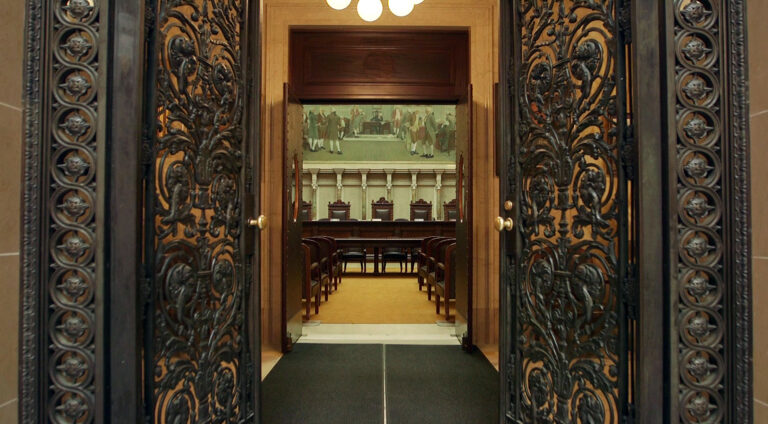Security questions swirl at the Wisconsin Capitol after armed man sought governor
An incident at the Wisconsin State Capitol is putting a spotlight on security for the building, which has its own police force but isn't protected by metal detectors, while Concealed weapons are allowed inside, but weapons cannot be openly carried.
Associated Press
October 6, 2023

Doors at the west entrance to the Wisconsin State Capitol stand open on Feb. 20, 2020, in Madison. On Oct. 4, 2023, a man illegally brought a loaded handgun into the Wisconsin Capitol, demanding to see Gov. Tony Evers, and returned at night with an assault rifle after posting bail. (Credit: PBS Wisconsin)

MADISON, Wis. (AP) — Wisconsin’s Capitol building is one of the most open in the country, which made it easy for a man to walk inside with a loaded handgun on Oct. 4 in search of Democratic Gov. Tony Evers.
The man was arrested for illegally openly carrying a weapon, but after posting bail, he returned outside the Capitol that same night with an AK-style semi-automatic rifle. He was placed in protective custody. As of Oct. 6, no charges had been filed.
The episode is once again putting a spotlight on security at the state Capitol, a building that has its own police force but is not protected by metal detectors, screening checkpoints or X-rays. Anyone can walk in off the street between 8 a.m. and 6 p.m. during the week and go straight to the offices of state lawmakers and others.
While concealed weapons are allowed in the building, firearms cannot be openly carried. An Evers administration spokesperson said the man’s handgun was in a holster.
The governor’s office is guarded by a Capitol police officer. That’s where the armed man headed Oct. 4, demanding to see the governor to talk about “domestic abuse towards men,” according to police. Offices for members of the Wisconsin Supreme Court are also behind locked doors, but there is no police guard.
All 132 state lawmakers have offices that are open to the public and unguarded.
Capitol police do have cameras throughout the building, and offices are equipped with a button that can be pushed to signal police in times of emergency.
The Wisconsin Capitol is one of 13 state capitols that does not have either metal detectors or X-ray machines, according to a 2021 report from the Council of State Governments.
In January 2022, someone in the office of state Sen. Joan Ballweg triggered the alarm, but no officer responded. That resulted in the state Senate ordering an outside audit of the Capitol Police by the University of Wisconsin-Madison Police Department.
Capitol Police instituted numerous changes following that report, including improving the emergency alarm system, and lawmakers in August ordered another review by the Legislative Audit Bureau that is slated to be done by the end of next year.
“I would bubble wrap each and every one of you if I could,” Wisconsin Capitol Police Chief David Erwin told lawmakers at an August hearing focused on security.
There have been temporary upgrades in Capitol security.
Metal detectors were installed at the Capitol in late February 2011 at the height of protests over then-Gov. Scott Walker’s proposal that effectively ended collective bargaining for most public workers. Protests lasted for weeks and grew as large as 100,000 people, with demonstrators spending weeks in the Capitol in an ultimately unsuccessful effort to block the proposal.
The metal detectors were removed in June 2011 under an agreement reached between Walker’s administration and the state employees union, which sued to get the Capitol reopened without metal detectors.
The Legislature voted to legalize the carrying of concealed weapons in 2011, and allowed them in the Capitol. Leaders argued then that if they were banned in the Capitol, then metal detectors would have to be installed to catch people trying to illegally sneak them in.
State Capitol security concerns were raised again after the riot at the U.S. Capitol on Jan. 6, 2021. But at the time, the Wisconsin Capitol was closed to the general public due to the ongoing COVID-19 pandemic.
Lawmakers have historically said little about their wishes for security in the building, out of fears of publicly discussing vulnerabilities. Republican and Democratic legislative leaders contacted Oct. 6 voiced support for reviewing building security, but none of them weighed in either for or against metal detectors.
Republican Assembly Speaker Robin Vos, in a statement, said he was not notified of the episode outside of the governor’s office “but it sounds like the Capitol Police did a fine job.”
Democratic Senate Minority Leader Melissa Agard said, “We absolutely need to assess all security options to ensure that everyone in our Capitol is kept safe whether they are a legislator, staff, or visitor.”
But she called for a broader discussion including laws that would prevent dangerous people from accessing firearms. Evers and Democrats have pushed for so-called red flag laws, but Republicans have blocked them.
Evers, when asked about security on Oct. 5, also demurred.
“I never, ever talk about what my security detail does or what they’re planning on doing,” Evers said. “But anytime something like this happens, obviously they reevaluate.”
 Passport
Passport











Follow Us